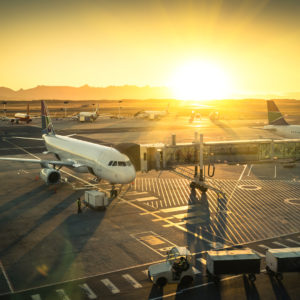Senate Democrats recently proposed a plan for $1 trillion in deficit spending on infrastructure. It would commit billions in taxpayer dollars to high-profile boondoggles, like high-speed rail, which ultimately provide little value for most Americans.
Though President Trump mostly prefers tax incentives to spur private infrastructure investment, he seems to agree with the common Democratic refrain that the nation’s infrastructure is crumbling and in need of significant upgrades. This is an exaggeration at best, but there is an opportunity to improve both the quality of key American infrastructure and lower taxpayer burdens at the same time by adopting free-market aviation reforms.
A recent report authored by the Heritage Foundation’s Michael Sargent, titled “Building on Victory: An Infrastructure Agenda for the New Administration,” lays out how this can be accomplished as part of a free-market-minded infrastructure plan. It describes the current system for funding airports as “woefully inefficient,” and recommends eliminating the centralized Airport Improvement Program and empowering airports to properly self-fund.
Under the current system, numerous aviation taxes are imposed by the federal government; some of the funds from which are then dispersed through grants to airports throughout the country to finance infrastructure improvements. There are a lot of problems with this approach, chief among them being the fact that the money doesn’t necessarily go where the travelers are.
As Sargent documents in another report focusing exclusively on improving airport funding, the federal program diverts resources away from the airports that passengers use most. Whereas the 60 largest airports in the United States serve almost 90 percent of customers, they receive only 27 percent of grants from the Airport Improvement Program. Non-commercial airports, meanwhile, receive 30 percent of grants while serving only a tiny fraction of overall fliers.
This is not a fair or efficient system. Too many travelers are being forced to subsidize a small minority. And then there’s the bureaucratic waste that inevitably comes from shuffling funds through multiple agencies and programs.
To make matters worse, the federal government hinders the ability of airports to properly fund their own improvements.
Airports are able to collect a passenger facility charge (PFC), which they can use to finance a narrow class of improvements as prescribed by the Federal Aviation Administration. The PFC is a user fee, which economists prefer to taxes because it puts the costs of improvements on those who would most benefit from them, while ensuring that the locations with the most need — because they get the highest amount of traffic — have access to more resources.
In other words, funds are distributed based on the behavior of consumers, instead of the arbitrary preferences of bureaucrats and politicians.
However, the federal government caps the maximum fee at $4.50. It’s been at the same level since 2000 despite inflation eroding half of its buying power. This threshold is simply too low — and wouldn’t exist at all if not for the lobbying of airlines — leaving airports reliant on taxpayer grants and all the problems associated with a centralized system.
Lifting the cap on PFCs, while eliminating the Airport Improvement Program and the various taxes used to fund it, would spur investment in aviation infrastructure and greatly improve the quality of air travel within the United States.
No one likes paying fees, but reducing federal involvement and allowing for a more efficient system will ultimately deliver better quality for lower cost. Rather than a top-down federal spending program such as that offered by Senate Democrats, Donald Trump should embrace this free-market approach to improving infrastructure.

